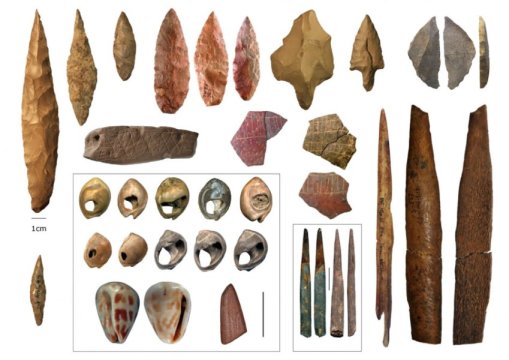[ad_1]
A scientific consortium led by Dr. Eleanor Scerri, British Academy Postdoctoral Fellow at the University of Oxford and researcher at the Max Planck Institute for the Science of Human History, has found that human ancestors were scattered across Africa, and largely kept apart by a combination of diverse habitats and shifting environmental boundaries, such as forests and deserts. Millennia of separation gave rise to a staggering diversity of human forms, whose mixing ultimately shaped our species.
While it is widely accepted that our species originated in Africa, less attention has been paid to how we evolved within the continent. Many had assumed that early human ancestors originated as a single, relatively large ancestral population, and exchanged genes and technologies like stone tools in a more or less random fashion.
In a paper published in Trends in Ecology and Evolution this week, this view is challenged, not only by the usual study of bones (anthropology), stones (archaeology) and genes (population genomics), but also by new and more detailed reconstructions of Africa’s climates and habitats over the last 300,000 years.
One species, many origins
“Stone tools and other artifacts — usually referred to as material culture — have remarkably clustered distributions in space and through time,” said Dr. Eleanor Scerri, researcher at the Max Planck Institute for the Science of Human History and the University of Oxford, and lead author of the study. “While there is a continental-wide trend towards more sophisticated material culture, this ‘modernization’ clearly doesn’t originate in one region or occur at one time period.”
Human fossils tell a similar story. “When we look at the morphology of human bones over the last 300,000 years, we see a complex mix of archaic and modern features in different places and at different times,” said Prof. Chris Stringer, researcher at the London Natural History Museum and co-author on the study. “As with the material culture, we do see a continental-wide trend towards the modern human form, but different modern features appear in different places at different times, and some archaic features are present until remarkably recently.”
The genes concur. “It is difficult to reconcile the genetic patterns we see in living Africans, and in the DNA extracted from the bones of Africans who lived over the last 10,000 years, with there being one ancestral human population,” said Prof. Mark Thomas, geneticist at University College London and co-author on the study. “We see indications of reduced connectivity very deep in the past, some very old genetic lineages, and levels of overall diversity that a single population would struggle to maintain.”
An ecological, biological and cultural patchwork
To understand why human populations were so subdivided, and how these divisions changed through time, the researchers looked at the past climates and environments of Africa, which give a picture of shifting and often isolated habitable zones. Many of the most inhospitable regions in Africa today, such as the Sahara, were once wet and green, with interwoven networks of lakes and rivers, and abundant wildlife. Similarly, some tropical regions that are humid and green today were once arid. These shifting environments drove subdivisions within animal communities and numerous sub-Saharan species exhibit similar phylogenetic patterns in their distribution.
The shifting nature of these habitable zones means that human populations would have gone through many cycles of isolation — leading to local adaptation and the development of unique material culture and biological makeup — followed by genetic and cultural mixing.
“Convergent evidence from these different fields stresses the importance of considering population structure in our models of human evolution,” says co-author Dr. Lounes Chikhi of the CNRS in Toulouse and Instituto Gulbenkian de Ciência in Lisbon.”This complex history of population subdivision should thus lead us to question current models of ancient population size changes, and perhaps re-interpret some of the old bottlenecks as changes in connectivity,” he added.
“The evolution of human populations in Africa was multi-regional. Our ancestry was multi-ethnic. And the evolution of our material culture was, well, multi-cultural,” said Dr Scerri. “We need to look at all regions of Africa to understand human evolution.”
[ad_2]















